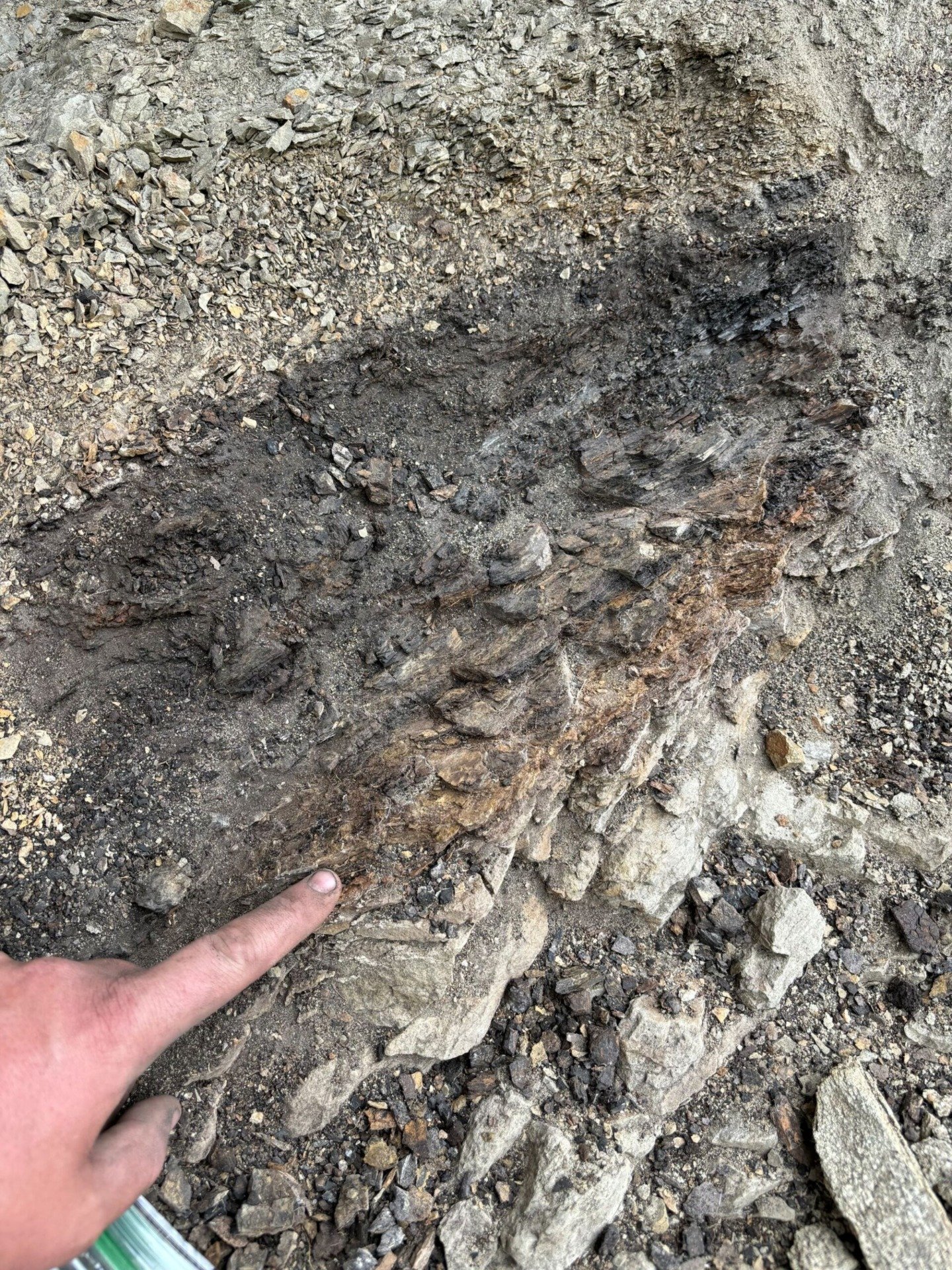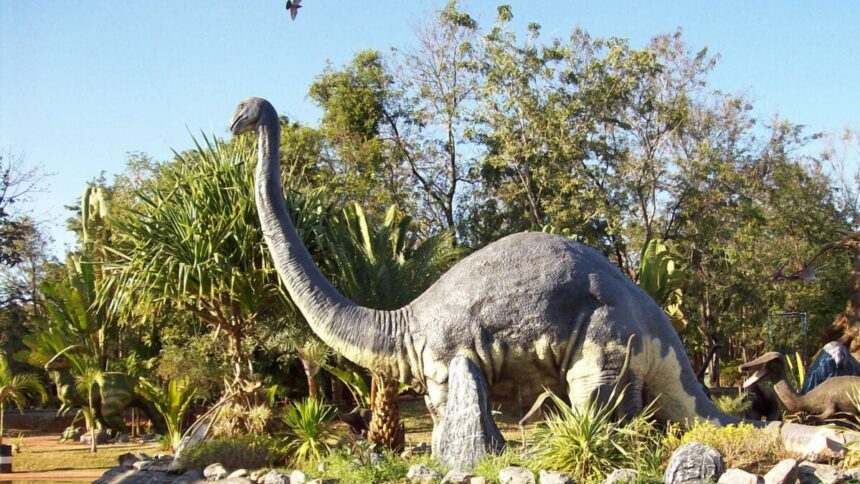Rocks formed immediately before and after non-avian dinosaurs went extinct are strikingly different, and now, tens of millions of years later, scientists think they’ve identified the culprit—and it wasn’t the Chicxulub asteroid impact.
In a study published Monday in the journal Communications Earth & Environment, researchers argue that dinosaurs physically influenced their surroundings so dramatically that their disappearance led to stark changes to the Earth’s landscape, and, in turn, the geologic record.
Specifically, their mass extinction—an event known as the Cretaceous-Paleogene (or K-Pg) mass extinction—enabled dense forests to grow, stabilizing sediments, and shaping rivers with broad meanders, or curves.
“Very often when we’re thinking about how life has changed through time and how environments change through time, it’s usually that the climate changes and, therefore, it has a specific effect on life, or this mountain has grown and, therefore, it has a specific effect on life,” Luke Weaver, a paleontologist at the University of Michigan, said in a statement.
“It’s rarely thought that life itself could actually alter the climate and the landscape. The arrow doesn’t just go in one direction.”
River deposits, not pond deposits
Weaver and his colleagues concentrated their studies on the Williston Basin, which spreads throughout parts of Montana, North Dakota, and South Dakota; and the Bighorn Basin, in north-central Wyoming. Williston Basin’s Fort Union Formation dates to after non-avian dinosaurs went extinct, and features colorful rock layers that Weaver described as resembling pajama stripes. Beneath the Fort Union Formation are water-rich soils similar to a floodplain’s outer edges.
Past research has posited that the colorful layers are evidence of pond deposits from rising sea levels. But the team’s new investigation, however, revealed that “the pajama stripes actually weren’t pond deposits at all. They’re point bar deposits, or deposits that form the inside of a big meander in a river,” Weaver said.
“So instead of looking at a stillwater, quiet setting, what we’re actually looking at is a very active inside of a meander,” he explained.
Above and below these river deposits were layers of a kind of coal created by plant matter, which the team thinks formed thanks to the stabilizing effect of thick forests, which can prevent rivers from frequent flooding. Stable rivers don’t distribute clay, silt, and sand across a floodplain, so the organic remains mostly pile up instead.
The iridium anomaly
The researchers then turned to what is called the iridium anomaly—a layer of rock rich in the element iridium—which deposited over parts of our planet when the Chicxulub asteroid struck Earth. As such, the iridium anomaly represents the K-Pg boundary.
At Bighorn Basin, Weaver analyzed samples from a thin line of red clay between the dinosaur-era formation and the subsequent mammal-era formation. “Lo and behold, the iridium anomaly was right at the contact between those two formations, right where the geology changes,” Weaver said.
“That discovery convinced us that this isn’t just a phenomenon in the Williston Basin. It’s probably true everywhere throughout the Western Interior of North America.”

Still, the researchers were puzzled as to why. They suspected that dinosaurs had somehow shaped their environment such that it influenced the geology, but it was only after weaver stumbled across a series of talks about how living animals like elephants shape their ecosystems that the team finally had its “lightbulb moment.” These ancient reptiles must have been the “ecosystem engineers” of their time.
“Dinosaurs are huge. They must have had some sort of impact on this vegetation,” Weaver said.
He and his colleagues argue that when non-avian dinosaurs were alive, they flattened vegetation and, as a result of their sheer size, affected the tree cover, likely shaping sparse, weedy landscapes with scattered trees. This would have meant that rivers without wide meanders may have flooded frequently. In the wake of their mass extinction, however, forests thrived, stabilized sediments, built point bars, and structured rivers.
“To me, the most exciting part of our work is evidence that dinosaurs may have had a direct impact on their ecosystems,” said Courtney Sprain, a co-author on the study.
“Specifically, the impact of their extinction may not just be observable by the disappearance of their fossils in the rock record, but also by changes in the sediments themselves.”
Earth clearly felt the loss of the dinosaurs in more ways than one. I, however, am glad that Tyrannosaurus Rex doesn’t exist anymore (and don’t even get me started on the Meraxes Gigas).
Read the full article here












